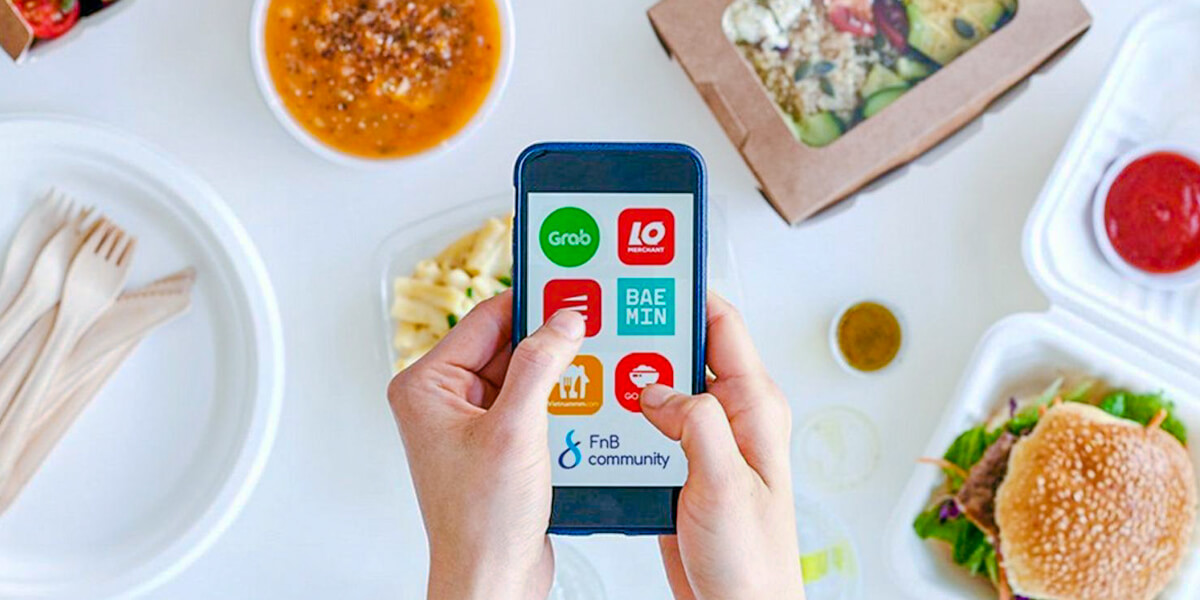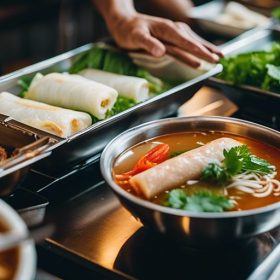The food delivery industry in Vietnam has experienced significant growth in recent years. With the rise of technology and changing consumer preferences, more and more people are opting for the convenience of having food delivered to their doorstep. According to a report by Statista, the revenue in the online food delivery segment in Vietnam is projected to reach US$1,526m in 2021, with an annual growth rate of 10.5% between 2021 and 2025.
The Convenience Factor: How Food Delivery Services are Meeting Consumer Needs
One of the main reasons for the popularity of food delivery services in Vietnam is the convenience they offer to consumers. With busy lifestyles and limited time, many people find it difficult to cook or go out to eat. Food delivery services provide a solution by allowing customers to order their favorite meals from a wide range of restaurants and have them delivered right to their doorstep.
Food delivery services are particularly beneficial for busy individuals and families. They save time and effort by eliminating the need to cook or go out to eat. Instead, customers can simply browse through a variety of menus, place an order, and have their meals delivered within a short period of time. This convenience factor has made food delivery services a popular choice for those who want to enjoy restaurant-quality meals without the hassle of cooking or dining out.
The Impact of COVID-19 on Food Delivery Services in Vietnam
The COVID-19 pandemic has had a significant impact on the food delivery industry in Vietnam. With lockdowns and social distancing measures in place, many restaurants were forced to close their doors or limit their operations. This led to a surge in demand for food delivery services as people turned to online platforms to order their meals.
During the pandemic, food delivery services played a crucial role in ensuring that people had access to food while minimizing the risk of exposure to the virus. They provided a safe and convenient option for customers to order meals from their favorite restaurants without leaving their homes. As a result, many food delivery platforms experienced a significant increase in orders and revenue during this period.
Ensuring Food Safety: The Measures Taken by Delivery Services
Food safety is a top priority for food delivery services in Vietnam. To ensure the safety of the food they deliver, these services have implemented various measures and protocols. This includes working closely with restaurants to ensure that they adhere to strict hygiene standards, conducting regular inspections of their partner restaurants, and providing training to delivery drivers on proper handling and transportation of food.
In addition, many food delivery services have implemented contactless delivery options to minimize the risk of transmission. This allows customers to receive their orders without coming into direct contact with the delivery driver. The use of tamper-evident packaging and seals also helps to ensure that the food remains safe and untouched during transit.
The Role of Technology in Food Delivery Services in Vietnam
Technology plays a crucial role in the food delivery industry in Vietnam. Mobile apps and online platforms have made it easier than ever for customers to order food from their favorite restaurants. These platforms allow users to browse through menus, place orders, track deliveries in real-time, and make payments online.
Food delivery services also use technology to optimize their operations and improve efficiency. They use algorithms and data analytics to optimize delivery routes, reduce delivery times, and improve customer satisfaction. In addition, they leverage technology to provide personalized recommendations and offers to customers based on their preferences and past orders.
The Competitive Landscape: The Major Players in the Food Delivery Market
The food delivery market in Vietnam is highly competitive, with several major players vying for market share. Some of the key players in the industry include GrabFood, GoFood, Now.vn, and Baemin. Each of these platforms has its own strengths and weaknesses.
GrabFood is one of the leading food delivery platforms in Vietnam. It has a wide network of partner restaurants and offers a seamless user experience through its mobile app. GrabFood also benefits from its integration with the Grab super app, which allows users to access a range of services including ride-hailing and grocery delivery.
GoFood, owned by Gojek, is another major player in the food delivery market. It has a strong presence in Vietnam and offers a wide selection of restaurants and cuisines. GoFood also differentiates itself by providing additional services such as grocery delivery and on-demand services like cleaning and laundry.
Now.vn is a popular food delivery platform that offers a wide range of restaurants and cuisines. It is known for its fast delivery times and user-friendly interface. Now.vn also offers additional services such as grocery delivery and on-demand services like beauty and wellness.
Baemin is a relatively new player in the Vietnamese food delivery market but has quickly gained popularity. It focuses on providing high-quality food from premium restaurants and offers a curated selection of dishes. Baemin also differentiates itself by offering unique features such as live tracking of delivery drivers.
The Future of Food Delivery Services in Vietnam: Trends and Predictions
The future of food delivery services in Vietnam looks promising, with several emerging trends and predictions for the industry. One of the key trends is the increasing demand for healthy and sustainable food options. As consumers become more health-conscious, there is a growing demand for nutritious meals that are made with fresh ingredients and prepared using sustainable practices.
Another trend is the rise of cloud kitchens or virtual restaurants. These are commercial kitchens that operate solely for the purpose of fulfilling online orders. Cloud kitchens allow restaurants to expand their reach without the need for physical locations, reducing overhead costs and increasing efficiency.
The use of artificial intelligence (AI) and machine learning (ML) is also expected to play a significant role in the future of food delivery services. AI and ML algorithms can be used to analyze customer data and preferences, allowing platforms to provide personalized recommendations and offers. They can also be used to optimize delivery routes and improve efficiency.
The Benefits of Food Delivery Services for Restaurants and Small Businesses
Food delivery services offer several benefits for restaurants and small businesses. Firstly, they provide an additional revenue stream for these establishments. By partnering with food delivery platforms, restaurants can reach a wider customer base and increase their sales without the need for additional physical locations.
Food delivery services also help to increase the visibility and brand awareness of restaurants. By listing their menus on popular platforms, restaurants can attract new customers who may not have been aware of their existence. This can help to build a loyal customer base and increase repeat orders.
Furthermore, food delivery services provide a cost-effective solution for small businesses that may not have the resources to invest in their own delivery infrastructure. By outsourcing the delivery process to third-party platforms, restaurants can focus on what they do best – preparing delicious meals – while leaving the logistics to the experts.
The Challenges Faced by Food Delivery Services in Vietnam
Despite the growth and popularity of food delivery services in Vietnam, there are several challenges that these platforms face. One of the main challenges is competition. With multiple players vying for market share, platforms need to differentiate themselves and offer unique value propositions to attract customers.
Regulation is another challenge faced by food delivery services in Vietnam. The industry is subject to various regulations and licensing requirements, which can vary from city to city. Platforms need to navigate these regulations and ensure compliance in order to operate legally.
Logistics is also a major challenge for food delivery services. Vietnam’s infrastructure is still developing, and traffic congestion can be a significant issue in urban areas. Platforms need to optimize their delivery routes and ensure timely deliveries despite these challenges.
The Role of Government Regulations in the Food Delivery Industry
Government regulations play a crucial role in ensuring food safety and fair competition in the food delivery industry in Vietnam. These regulations help to protect consumers by setting standards for hygiene and food handling practices. They also help to ensure fair competition by preventing monopolies and promoting a level playing field for all players in the market.
In recent years, the Vietnamese government has introduced several regulations to regulate the food delivery industry. This includes requirements for platforms to obtain licenses, adhere to food safety standards, and provide transparent pricing information to customers. These regulations aim to protect consumers and promote a safe and fair environment for both customers and businesses.
The Growing Importance of Food Delivery Services in Vietnam’s Economy
In conclusion, food delivery services have become an integral part of Vietnam’s economy. The convenience they offer to consumers, coupled with the impact of the COVID-19 pandemic, has led to a surge in demand for these services. As technology continues to advance and consumer preferences evolve, the future of food delivery services in Vietnam looks promising.
However, there are challenges that need to be addressed, such as competition, regulation, and logistics. Platforms need to differentiate themselves and offer unique value propositions to attract customers. They also need to navigate government regulations and ensure compliance in order to operate legally. Furthermore, they need to optimize their logistics operations to ensure timely deliveries despite the challenges posed by Vietnam’s infrastructure.
Overall, food delivery services have transformed the way people eat in Vietnam. They provide convenience, choice, and safety for consumers while offering additional revenue streams and increased visibility for restaurants and small businesses. As the industry continues to grow and evolve, it will play an increasingly important role in Vietnam’s economy.

Cuong Nguyen is a talented writer and experienced waitress at Vietnampalace.net, a renowned Vietnamese restaurant that offers an extensive menu of authentic Vietnamese cuisine. With a background in the competition of Vietnamese cuisine, Cuong brings a wealth of knowledge and expertise to the dining experience. From delicious pho dishes to fresh spring rolls, Cuong ensures that every meal is made with the freshest ingredients and authentic flavors.With exceptional service and a friendly atmosphere, Cuong takes pride in providing a memorable dining experience for every customer.
Whether you’re a vegetarian looking for options or a meat lover craving the flavors of traditional Vietnamese dishes, Cuong guarantees a delightful culinary adventure. So, visit Vietnampalace.net and let Cuong guide you through the tantalizing world of Vietnamese cuisine.



